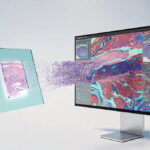The quick adoption of remote patient monitoring (RPM) accelerated the development of telehealth and played a vital role in making at-home care a reality. This novel approach to care delivery assisted in limiting the spread of COVID-19 among the most vulnerable populations by enabling healthcare professionals to offer patients acute and chronic illnesses with the entire spectrum of care.
The market worth of remote patient monitoring in 2021 was USD 1.45 billion, and it will reach USD 4.07 billion by 2030, growing at an 8.74% CAGR during the forecast period.
By implementing RPM into a patient’s care plan, physicians can monitor vitals and health data between visits, allowing them to respond quickly and make treatment modifications before a patient’s condition deteriorates or necessitates an expensive trip to the emergency department (ED). With this vital health data, clinicians may make more informed clinical decisions and provide more efficient and effective care.
Remote Patient Monitoring: Old Vs. AI-enabled Method
The idea of remote patient monitoring (RPM) is familiar and has existed for a while. However, the pandemic has influenced the installation of new systems in hospitals.
On the other hand, traditional RPM involves positioning a camera to stream the video across a network to send to a display in a different location for manual monitoring. Although it can help with patient monitoring, employees must be accessible to view the display at all times. These devices also lack analytical capabilities based on the data captured on the stream.
AI has the potential to drastically alter this situation. It is now possible to automate gathering data for various types of predictive ML (machine learning) based models for inferencing due to the use of AI in remote patient monitoring.
Role of AI & Camera in Enhancing the Potential of RPM Devices
To effectively employ AI in remote patient monitoring scenarios, embedded vision, and camera technology needed to be included. Innovative embedded cameras have made it possible to collect high-quality images regardless of the lighting in the patient’s room, from high-resolution cameras to NIR cameras and RGB-IR cameras.
One or more acceptable digital imaging solutions that can be incorporated into hospital networks are required for remote patient monitoring. It enables healthcare teams to assess patient conditions from a distance and health professionals to monitor several patients.
Remote patient monitoring is progressing by utilizing artificial intelligence, from simple monitoring to performing behavioral analysis such as fall detection, tracking patient movements, monitoring people in a room, and much more.
To avoid further falls, the patient’s behavior is analyzed and categorized according to frameworks like PeopleNet.
Role of AI-enabled RPM in Improving Care Delivery
AI and RPM can promote therapeutic effectiveness, improve outcomes, and increase patient adherence. The four ways AI-enabled RPM improves care delivery are as follows:
Increases patient adherence and self-management
Patient adherence is one of the issues preventing the widespread implementation of RPM. Many patients need more support and incentive to use RPM effectively, and most clinics need more time to monitor patients’ compliance. With AI-enabled RPM, a virtual health assistant communicates with patients via text message to remind them to take their readings and to offer support and instruction. Patient retention rises as a result of increased patient adherence.
Boost Clinical efficiency
Higher patient compliance results in more frequent readings, which provides the practitioner with more precise and useful data. With this knowledge, physicians can make planned care decisions and better tailor treatment to meet their patients’ requirements. A practice may go months without engaging with a patient if there is no ongoing communication between the patient and the provider.
Fosters better patient outcomes
Patients suffering from chronic conditions such as hypertension, heart failure, diabetes, and obesity frequently require strict adherence to medicine, exercise, and care programs daily. Providers can spot health trends across time and between visits using AI-enabled RPM, which leads to early interventions, fewer hospitalizations, and better patient outcomes. AI-enabled RPM has been shown to enhance patient health measures, including significant decreases in blood pressure, blood glucose, and weight.
Lower care costs
AI-enabled RPM technology may minimize avoidable ED visits and inpatient utilization, ultimately lowering care costs by enabling early diagnosis of clinical deterioration and more timely therapy.
Remote Patient Monitoring Insurance
Remote patient monitoring insurance coverage is increasingly essential as more healthcare providers adopt AI-driven RPM tools. Many insurance plans now offer partial or full coverage for RPM services, recognizing its role in reducing emergency visits and hospitalizations. By covering RPM costs, insurers support preventive care, which helps manage chronic conditions effectively and reduces overall healthcare expenditures. Expanding RPM insurance options can further accelerate its adoption, making it accessible to more patients, especially those in rural or underserved areas.
Future of Ai-Based Remote Patient Monitoring
Embedded vision is one of the technologies destined to play a significant role in AI-powered remote patient monitoring. Modern embedded vision cameras allow for recording high-quality imagery independent of the lighting in a patient’s room. This not only enables remote monitoring but also allows health staff to monitor several patients at the same time.
These cameras, when combined with AI, can deliver highly specific behavioral analysis Staff can monitor patient movements to spot any strange behaviors or unexpected falls. While this saves time and enhances capabilities, implementing this technology is still some time away.
References:
Global remote patient monitoring devices market (2021 – 2030)
Read Also
- Automated Healthcare Software Solutions: How Intelligent Platforms Are Redefining Clinical, Administrative, and Operational ExcellenceThe healthcare industry is undergoing a seismic transformation. Rising patient volumes, value-based care models, staffing shortages, and complex regulatory demands have prompted organizations to look beyond traditional tools and embrace advanced software automation. As providers search for innovative partners capable of tailoring these sophisticated systems to real-world workflows, many turn to MCSI (Managed Care Systems,… Read more: Automated Healthcare Software Solutions: How Intelligent Platforms Are Redefining Clinical, Administrative, and Operational Excellence
- Why Whole Slide Imaging Shapes the Future of Digital PathologyWhole slide imaging has become one of the most important developments in modern pathology. It changes how tissue is examined, how cases are shared and how pathologists collaborate with the wider care team. More than a technological upgrade, it represents a shift in how laboratories think about their workflow, their storage needs and the tools… Read more: Why Whole Slide Imaging Shapes the Future of Digital Pathology
- Comparing 2025 Dental Practice Management Software OptionsSoftware Key Strengths Potential Limitations Best For Dentimax • Offers both cloud-based and on-premise/server deployment. • Tight integration between imaging (e.g. X-ray sensors) and practice management, charts, treatment planning, imaging all in one. • Transparent pricing and relatively simple UI/usability; solid for small to medium general practices. • May lack some of the… Read more: Comparing 2025 Dental Practice Management Software Options
- Top Innovations in Dermatology and Skincare TechnologiesHave you ever wondered how skincare keeps getting better year after year? From fighting acne to reducing wrinkles, today’s treatments seem more advanced than ever before. The tools and techniques used by dermatologists today are smarter, safer, and more effective than those we had just a few years ago. These breakthroughs don’t just help with… Read more: Top Innovations in Dermatology and Skincare Technologies
- Telehealth and Beyond: Building a Connected Continuum of CareHealthcare is on the verge of a radical transformation. Technology no longer simply supports medicine; it actively shapes how care is delivered and experienced. Achieving a seamless continuum demands more than deploying tools—it requires intentional design, coordinated teamwork, and innovative platforms that adapt to diverse clinical and patient needs. This article explores key strategies for… Read more: Telehealth and Beyond: Building a Connected Continuum of Care






